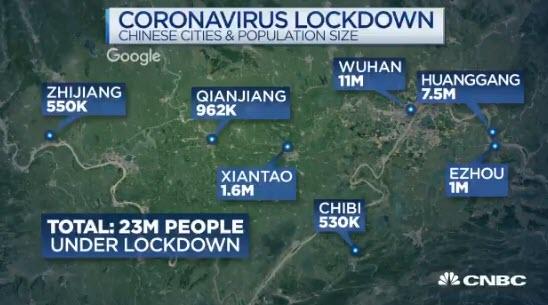The Real Umbrella Corp: Wuhan Ultra Biohazard Lab Was Studying “The World’s Most Dangerous Pathogens” from Zero Hedge
Now that not one but seven Chinese cities – including Wuhan, ground zero of the coronavirus epidemic – and collectively housing some 23 million people, are under quarantine…
… comparisons to the infamous Raccoon City from Resident Evil are coming in hot and heavy. And, since reality often tends to imitate if not art then certainly Hollywood, earlier today we jokingly asked if the Medical Research Institute at Wuhan University would end up being China’s version of Umbrella Corp.
Is the Medical Research Institute at Wuhan University, Center for Immunology and Metabolism also called “Umbrella Corp” for short?
— zerohedge (@zerohedge) January 23, 2020
As it turns out, it wasn’t a joke, because moments ago it was brought to our attention that in February 2017, Nature penned an extensive profile of what it called the “Chinese lab poised to study world’s most dangerous pathogens.” The location of this BSL-4 rated lab? Why, Wuhan.
A quick read of what this lab was meant to do, prompts the immediate question whether the coronavirus epidemic isn’t a weaponized virus that just happened to escape the lab:
The Wuhan lab cost 300 million yuan (US$44 million), and to allay safety concerns it was built far above the flood plain and with the capacity to withstand a magnitude-7 earthquake, although the area has no history of strong earthquakes. It will focus on the control of emerging diseases, store purified viruses and act as a World Health Organization ‘reference laboratory’ linked to similar labs around the world. “It will be a key node in the global biosafety-lab network,” says lab director Yuan Zhiming.
The Chinese Academy of Sciences approved the construction of a BSL-4 laboratory in 2003, and the epidemic of SARS (severe acute respiratory syndrome) around the same time lent the project momentum. The lab was designed and constructed with French assistance as part of a 2004 cooperative agreement on the prevention and control of emerging infectious diseases. But the complexity of the project, China’s lack of experience, difficulty in maintaining funding and long government approval procedures meant that construction wasn’t finished until the end of 2014.
The lab’s first project will be to study the BSL-3 pathogen that causes Crimean–Congo haemorrhagic fever: a deadly tick-borne virus that affects livestock across the world, including in northwest China, and that can jump to people.
Future plans include studying the pathogen that causes SARS, which also doesn’t require a BSL-4 lab, before moving on to Ebola and the West African Lassa virus,
What does BSL-4 mean?
BSL-4 is the highest level of biocontainment: its criteria include filtering air and treating water and waste before they leave the laboratory, and stipulating that researchers change clothes and shower before and after using lab facilities. Such labs are often controversial. The first BSL-4 lab in Japan was built in 1981, but operated with lower-risk pathogens until 2015, when safety concerns were finally overcome.
And here’s why all this is an issue:
Worries surround the Chinese lab. The SARS virus has escaped from high-level containment facilities in Beijing multiple times, notes Richard Ebright, a molecular biologist at Rutgers University in Piscataway, New Jersey.
Below we repost the full Nature article because it strongly hints, without evidence for now, that the coronavirus epidemic may well have been a weaponized virus which “accidentally” escaped the Wuhan biohazard facility.





